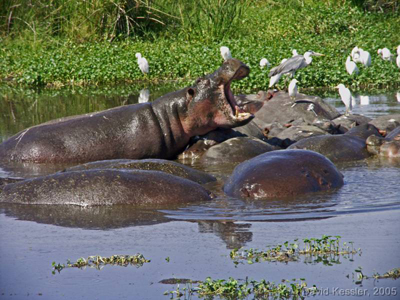As I’ve been thinking about the leadership skills that serve networks well, I remembered something I wrote in August 2007 about the roles that show up in emergent systems.
What I posited then was that should any of these roles be missing, the chance of coherence emerging – of finding the simplicity on the other side of complexity – is much lower.
Today I think of network leadership skills in terms of cultivating hubs and making links. Yet, as I re-read these roles, I discovered my thinking hasn’t changed much. I added “inviter” to my original list and moved “disturber” up front. Beyond that, it seems I’d ordered them in something of a temporal way – roles that support disrupting, differentiating, and cohering. My list follows the photograph.

Okay, leadership skills may not be obvious in the picture, but I suspect there’s a lot more going on in this ecosystem that we completely grasp!
What roles would you add or change?
Disturber – Someone who brings attention to something from outside the system (a person on act of nature) that interrupts existing assumptions or patterns. It can also be someone/something from inside the system that is differentiating itself in a way that interrupts current assumptions and patterns.
Attractor – Someone(s) who asks a calling question (implicitly or explicitly) that draws people who care about the issue to come present. In formal systems, we typically call this person the sponsor.
Inviter — Someone(s) who reach out to engage the diversity of the system. Based on the intent of the calling question, who needs to be involved? Inviters are gifted and knowing how to make the connections, particularly to those who may not quite see their stake in the situation.
Guide – Someone(s) provide hospitable space for the work. Sometimes this includes a process that channels energy. Other times, it is simply ensuring the gentle structures for a nutrient environment are present. In group process work, this is the person identified as the facilitator.
The People of the System – The people who bring the varied voices of the system. The broader the definition of the system, the more diversity is in the room.
Bridge/translator – Someone(s) who can provide a sufficient hook for others in the system to connect with the disturbance/disturber. Without this role, rather than creative use of the disturbance, resistance or rejection by the system’s immune system goes up. These folks are active in the conversation, helping the rest of the group connect with what the disturber is attempting to express.
Edge worker – An easy to overlook and critical role! Edge workers generally hang at the margins. When someone checks out because they’re disturbed, an edge worker listens, sees, and honors that participant. Edge workers are gifted at staying present to what is happening for the other person, artfully reflecting back what they experience. They support others to discover the nuggets hidden in their dissonance.
Organizer – As new insights emerge, someone(s) grasps the threads and starts to weave them into a new story, one from which action flows.
Artist – Different forms of expression – words, music, art, movement – matters. Artists help us move beyond stuck places, engaging people on different channels. Art can make meaning more visible and can amplify the effectiveness of the interactions.


[…] This post was mentioned on Twitter by David Holzmer, PeggyHolman. PeggyHolman said: Mulling Leadership Roles in Emergent Systems http://bit.ly/aqjueK […]
Peggy — your thoughts on the content of the url article would be appreciated. Andrew
Hi Peggy,
Great book, btw, and I will get around to blogging properly about it sometime!
I’m involved in this great UK-based organisation, AMED, which publishes a journal four times a year. The latest edition is on coaching as organisational development. Reading that and seeing this blog post on the same day made me wonder what role a coach might play. Some, but not all, of the roles you identify above, because of the need for the coach to ‘keep themselves out of the conversation’.
But if the coaching client is involved in bringing forth emergent change, then the coach can bear your roles in mind when helping their client explore their own role.
http://www.amed.org.uk/group/coachingasorganisationaldevelopmenteopwinter2010?xg_source=activity
Cheers
Penny
[…] about leadership roles in emerging systems, Peggy Holman has updated her proposed list. Read about system roles including […]
Penny,
What a great thought! One aspect I’d add for coaches…supporting the client in engaging with people when these roles play out. For example, disturbers can be threatening to those most embedded in the existing order. Supporting a client in hearing the underlying message from a disturber could be useful. Or knowing who the natural bridge people or edge workers are offers partners in change.
Andrew – Thanks for sharing your Integral Leadership Review article, Leadership for Emergence. What a lovely lived experience you created for people! And what a elegant and artistic telling of your story. Congratulations! I am particularly taken by the exchange about the Tao. A snippet from it:
You look, for instance, at this present gathering of people, and you say: ‘Where do they come from?
Why should they come together? The Eastern mind is not at all interested in that. It says: ‘What does it mean that these people are together?’